Chiang Mai is the largest city in Northern Thailand and the second largest in the country. It’s a popular destination on the backpacker trail and receives 10 million tourists a year.
If you’re asking yourself; what is Chiang Mai famous for? You’ve come to the right place. Many people know Chiang Mai for its gorgeous natural beauty, friendly locals, tantalizingly tasty Thai cuisine, and an abundance of temples, but it’s so much more than that.
If you’re unfamiliar with Thailand’s so-called ‘Rose of the North’, we’ve shared the biggest reasons why Chiang Mai is well known, and why everyone simply has to visit on any trip to the Land of Smiles.
What Is Chiang Mai Famous For?
1. Rich History

There are so many things to see and do in Chiang Mai city and the wider province which is largely down to its rich and fascinating history.
Tucked away in the rolling hills of Northern Thailand, the origins of Chiang Mai can be traced all the way back to the 13th century when it was founded as the official capital of the Lanna Kingdom under the legendary rule of Mangrai.
Due to the constant threat of invasion from numerous groups like the Taungoo Dynasty of Burma and the armies of the Mongol Empire, a moat and a huge defensive city wall were both built, with the moat still bordering the Old City even today.
Unfortunately, barely any of the city wall has survived the test of time, however, there are still small portions still visible as well as multiple ‘city gates’ that you can visit which served as key entry points into the city.
The most famous of these gates is Tha Phae Gate, on the eastern side of Chiang Mai. A crucial entry point for traders and travellers coming from Lanna’s eastern regions and neighboring countries.
Tha Phae Gate has been beautifully restored using photographs, paintings, and drawings following its destruction during World War II and is a quick must-visit when in the city.
2. Stunning Temples and Pagodas
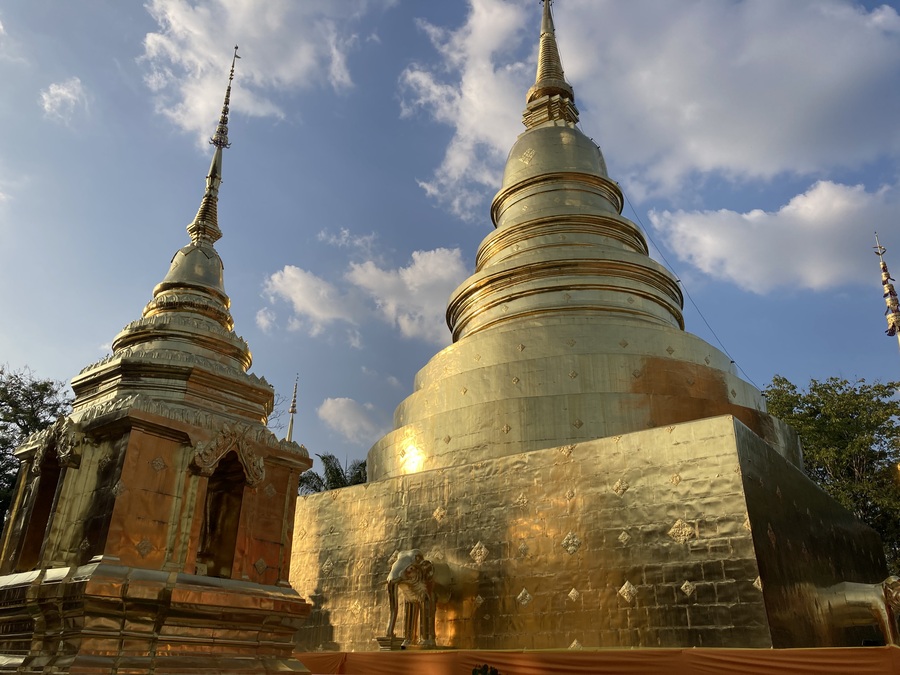
Another huge reason why Chiang Mai is so famous is because the city is home to numerous stunning temples and pagodas. Numerous may be a slight understatement as the city actually has 117 Buddhist temples waiting for you to explore!
Wat Phra Singh is arguably the most famous and most visited, thanks to its large temple complex housing several buildings and chedis.
Built in the 14th century, Wat Phra Singh is considered one of the finest examples of Lan Na architecture and is famous throughout Thailand for previously housing the royal ashes of King Kham Fu, the father of King Phayu, the fifth king of the Mangrai dynasty.
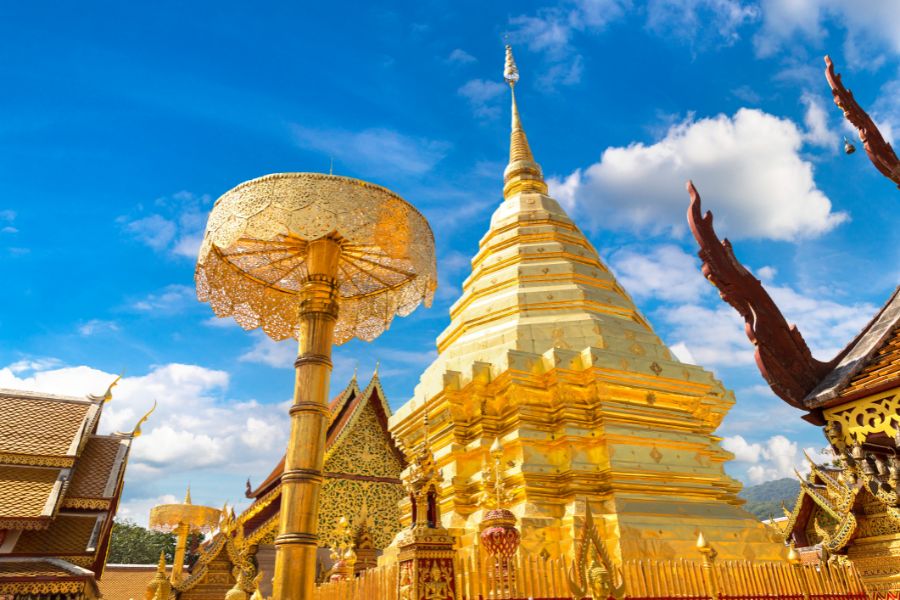
Wat Phra That Doi Suthep is another popular temple to visit due to its location, perched right on top of Doi Suthep mountain, just a short drive out from the city center.
Founded in 1383, Wat Doi Suthep provides visitors with unbelievable panoramic views across Chiang Mai city and beyond and is one of the most iconic and revered temples in the entire country.
Once you reach the temple complex, you’ll be faced with a grand staircase flanked by two Naga’s which is actually the longest Naga staircase in Thailand. After making it up the 309 steps, you’ll be greeted with a huge shining golden chedi, the holiest area in the complex.
As well as this gorgeous chedi, there are other pagodas, Buddha statues, and shrines together with a viewing platform for the gorgeous sunrises you can witness here.

Wat Chedi Luang is another masterpiece of Lanna architecture and this holy site is sacred due to it housing the Emerald Buddha for almost 100 years.
Due to an extremely strong earthquake damaging the temple in 1545, the Emerald Buddha was moved to Luang Prabang shortly after for preservation.
Wat Chedi Luang is also popular with monks wanting to learn English. Each day, tourists are encouraged to seek out select monks who are interested in learning English and have a simple chat with them about Buddhism and Thailand in general. It’s one of the most unique activities you can add to your Chiang Mai itinerary.
3. Bustling Digital Nomad Community
Like many popular destinations in Southeast Asia, Chiang Mai is now a popular, thriving hub for remote workers and digital nomads, attracting them from all over the world. It’s estimated there are 30,000 expats in Chiang Mai alone, coming from all over the world.
There is an increasing number of coworking spaces popping up in the city, with amenities and services like ultra-fast internet, wide open workspaces, big gardens for you to take time outs in, large meeting rooms, and cafes for a quick midday refuel.
Being an established digital nomad destination also comes with the added benefit of networking and a real sense of community. Events, meet-ups, and workshops are set up frequently for you to meet like-minded people and socialize.
Like many cities in Thailand, Chiang Mai is also known for being super affordable and having a low cost of living, which is ideal for those on a strict budget.
Accommodation, eating out, transport, and entertainment are all cheap which gives you greater flexibility with your money to spend on enjoying the beauty of living in Northern Thailand.
4. Fabulous Festivals
Thailand’s profound and rich religious roots mean that there are plenty of holidays, celebrations, and festivals to witness and even take part in, and at the center of these festivals is Chiang Mai.
The city is one of the best places to be for a variety of religious festivals due to the city generally being the artistic home of the country.
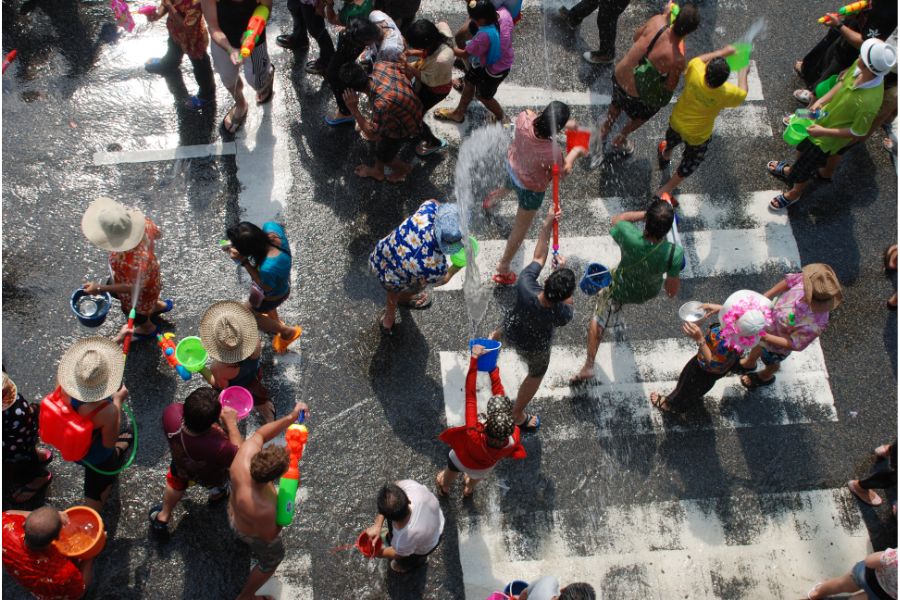
Songkran, or Thai New Year, is held during the middle of April each year and the celebrations are renowned for being the most vibrant and fun in the calendar.
You might be thinking that the celebrations may center around a temple or something else deeply religious.
Well, people do visit the temples to wash the buddha statues, but it’s more commonly celebrated by taking to the street with water guns. Each year, thousands of people use water guns and giant buckets filled with water to soak everyone and everything in a fun, friendly, and good-natured battle.
The mass water fight symbolizes cleansing yourself of the past year and welcoming in the new, and it is generally agreed that Chiang Mai is the best city for Songkran celebrations.
Loi Krathong is another popular festival that is best observed in Chiang Mai. Masses of small floats (krathongs) made of banana leaves, flowers, incense, and candles are launched onto rivers, canals, and lakes to float away symbolizing the letting go of bad energies and inviting positive change into your life.
The festival is usually held on the night of the full moon of the twelfth lunar month which generally works out to be in November.
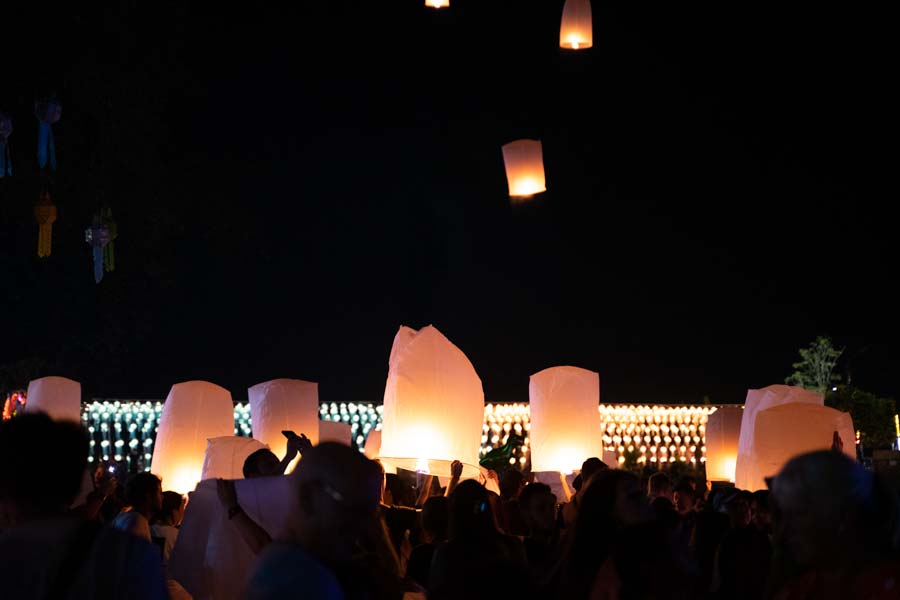
The Yi Peng Lantern Festival is also closely associated with Chiang Mai’s Loi Krathong celebrations and is one of the main reasons to visit Chiang Mai in November.
During this spectacular festival held at the same time, the city’s night sky is illuminated with floating lanterns in an almost matching ceremony with Loi Krathong, though with the krathongs released on water.
Both the krathongs and the lanterns symbolize the act of letting go, casting away worries and troubles. Yi Peng is a unique tradition in Chiang Mai creating a wonderful festival atmosphere.
5. Sumptuous Local Thai Cuisine
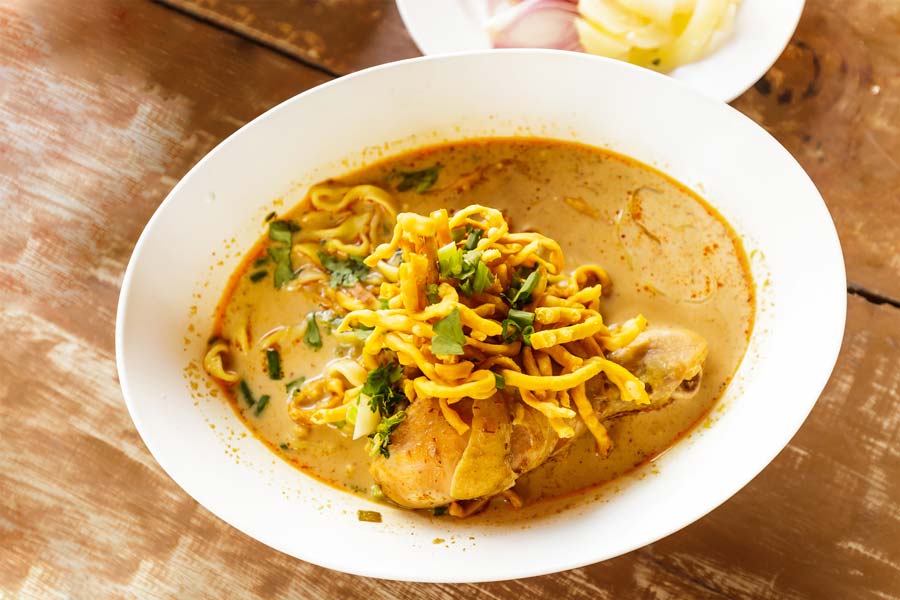
Chiang Mai’s Northern Thai cuisine is a huge reason to visit the city and is nothing but a testament to the tantalizing fusion of flavours drawn from the influences of various neighboring countries.
When people speak of actual Thai food from Thailand, many will say that their hands down favourite dish is Khao Soi. Chiang Mai’s signature dish, Khao Soi is a rich noodle curry that is simply a must-try for anyone visiting the city.
Soft, delicate egg noodles and tender pieces of slow-cooked chicken are swimming in a gorgeous, creamy coconut curry broth that’s topped with crispy fried noodles, pickled mustard greens, raw red onion, and a big wedge of lime.
This combination of creamy curry with crispy noodles, tangy acidity from the lime, and the fresh pungency of the raw onion make it probably one of my favorite Thai dishes ever. It’s so incredibly moreish that it’s almost impossible to divert from anything else on the menu.
Other Northern Thai specialties you’ll find in Chiang Mai include Khanom Jeen Nam Ngiew (a thin rice noodle-based dish with a tomato-based broth and minced pork), Gaeng Hang Lay (a Burmese-influenced slow-cooked pork curry), and Sai Ua, a spicy and aromatic pork sausage that can be found grilling away in most of the city’s night markets and restaurants.
Made with ground pork, fragrant herbs like lemongrass and kaffir lime leaves, and also red curry paste for heat, the sausage is then grilled to perfection over charcoal and served with a wedge of crunchy cabbage and a fresh whole chilli to nibble on for extra spiciness.
6. Jaw-Dropping Natural Beauty

Thailand is a country known for its gorgeous landscapes, whether that be pristine white sand beaches with palm trees and clear seas, or lush rolling hills covered with morning mist and dense tropical jungles.
Chiang Mai, being in the North and landlocked, is famous for the latter, having misty mountains, dense jungle canopy, deep caves, and gushing waterfalls.
Due to this stunning natural scenery, it is one of the best regions for hiking trails through the jungle and forests, and if you’re lucky, even stumbling across some rare wildlife such as wild elephants, gibbons, and exotic birds.
Whilst Doi Suthep, the mountain housing the temple we spoke about earlier is notable in the region, it is actually Doi Inthanon National Park that is home to the tallest peak in Thailand.
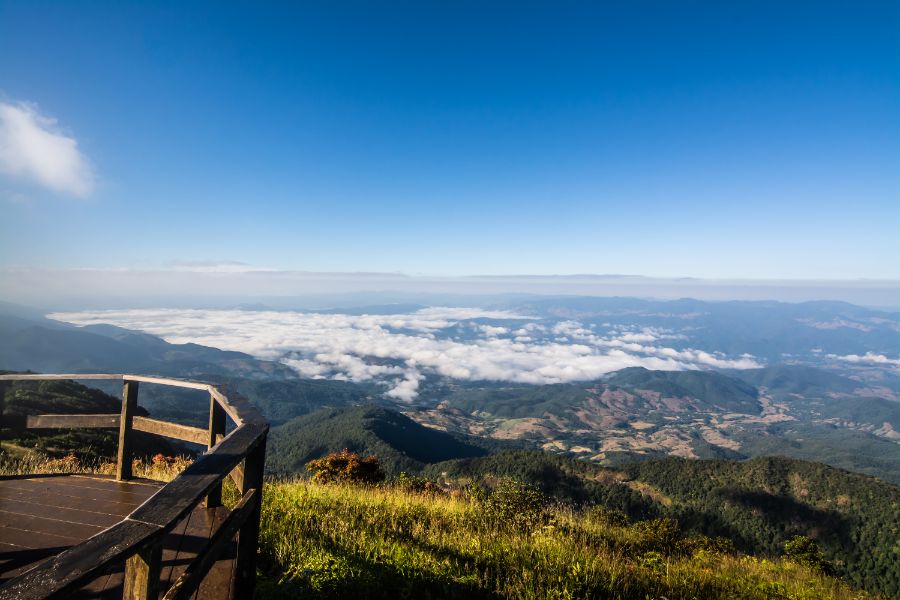
After arriving at the National Park entrance, you’ll wind through a beautiful landscape of smaller mountains, forests, and breathtaking waterfalls before reaching the peak at 2565 meters.
Sticky Waterfall, or Bua Thong Waterfall as it is known more locally is another natural wonder 60km outside of Chiang Mai.
This collection of waterfalls is known for being covered in mineral deposits which prevent slippery algae from forming on the rocks allowing you to keep a sturdy grip over the gushing water.
If going underground is more your type of adventure, then a trip to Chiang Dao Cave is a must-do.
Located just over an hour’s drive north of Chiang Mai, the cave is a complex of chambers deep within a mountain range and features gigantic stalagmites and stalactites protruding from the cave floor and ceilings.
7. Elephant Sanctuaries
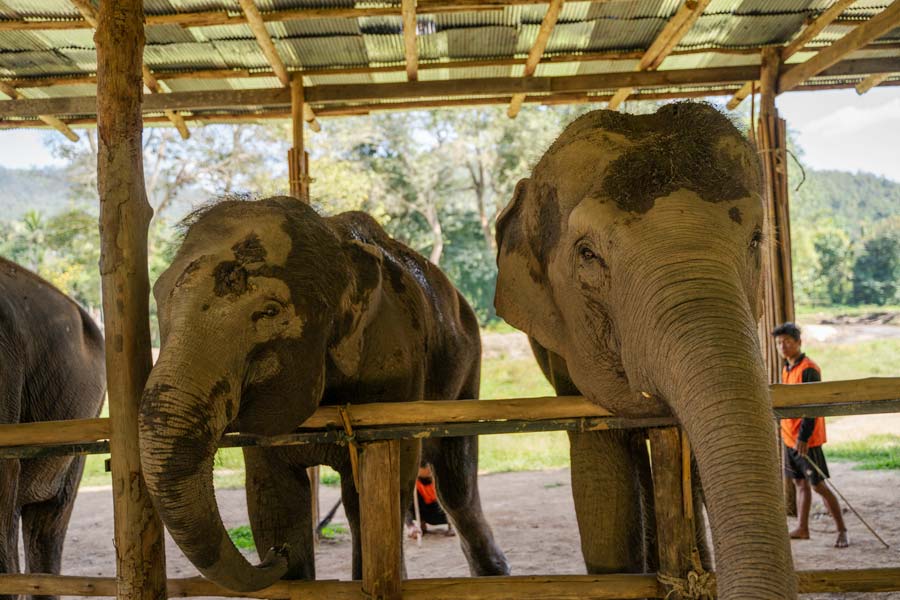
Chiang Mai is also very well known for its elephant sanctuaries, attracting travelers from all over the world who want to get up close to these majestic giants. With around 13 sanctuaries in the region, Chiang Mai is the place to go if you want to see the Asia elephant up close.
While some of these sanctuaries are obvious tourist traps, others provide a safe haven for elephants, promoting ethical treatment and conservation efforts.
Before these elephants were placed in sanctuaries, they were used in the logging and tourism industry, but since those industries closed down, their owners could no longer afford them, and so they went to live in the sanctuaries.
Now instead of offering rides or performing tricks, they can roam freely and live without cruelty in their natural environment.
These sanctuaries came about as a response to the need for elephant welfare and conservation. Local organizations and passionate individuals have worked tirelessly to rescue elephants from abusive situations, such as logging and the entertainment industry.
They provide a place where elephants can recover from their past traumas and thrive in a more compassionate setting.
Chiang Mai has become a global hub for responsible elephant tourism, but travelers should still watch out for unethical places. Any sanctuary that allows you to touch, bathe, ride, or feed an elephant is not considered ethical. You should observe but not interfere if you want to support ethical tourism.
8. Hill Tribes

Chiang Mai is one of the most authentic regions in Thailand since it still has a large hill tribe community. These indigenous communities contribute to the rich cultural tapestry to the region’s identity.
There are numerous hill tribes in Chiang Mai, such as the Karen, Hmong, Lahu, Akha, and many more. Each tribe has its own distinct language, customs, and traditional attire.
These hill tribes have inhabited the mountains of Northern Thailand for generations, preserving their unique ways of life. Over time, they have become an integral part of Chiang Mai’s tourism scene, allowing visitors to immerse themselves in their fascinating cultures.
The presence of hill tribes in Chiang Mai is a testament to the resilience and diversity of Thailand’s ethnic minorities.
9. Opium Trade
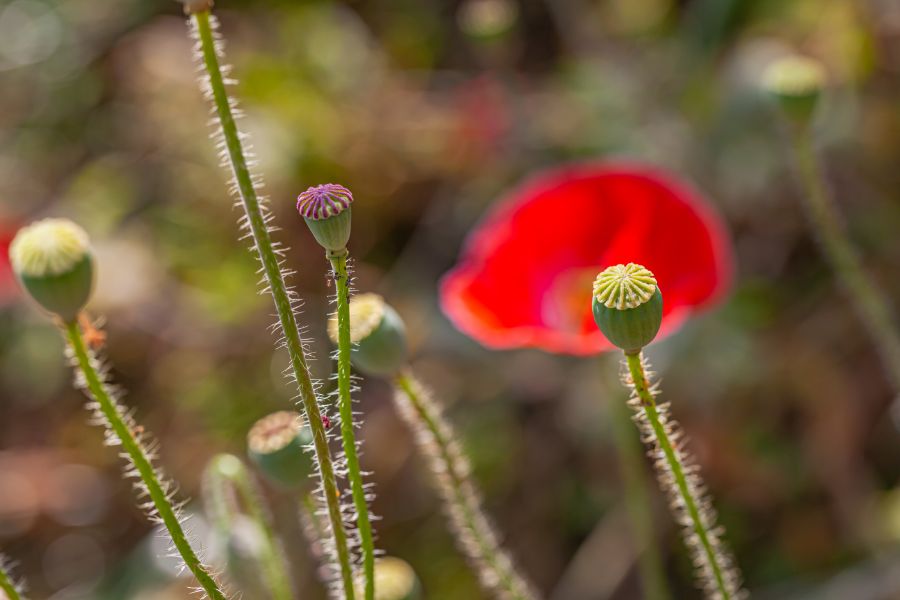
Chiang Mai gained notoriety for its involvement in the opium trade, and is where the name “The Golden Triangle” was coined. The notorious Golden Triangle is an area of land between Myanmar, Northern Thailand and Laos, where opium and heroin was produced and trafficked.
It began in the 1940s and by the 1950s, it was the largest producer of opium in the world. Back in the day, it served as a vital hub for the opium and heroin trade, catering to the US forces in Vietnam and the domestic market.
Today, Chiang Mai still grows opium though it has moved beyond that dark past and now produces the substance for the creation of morphine and medicinal use.
10. Year Round Gorgeous Weather
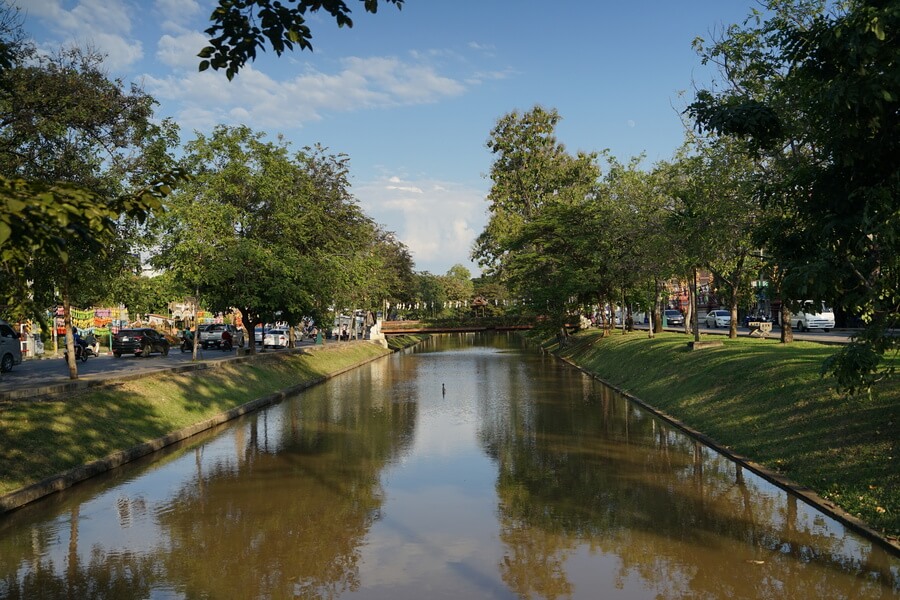
Aside from the Burning Season, there is no bad time to visit Chiang Mai, since it boasts gorgeous weather all year round.
While some may expect Chiang Mai to be cold because it’s further north and also a little mountainous, but it’s actually pleasantly warm, rarely falling below 15°C in January and hovering in the early 30’s in the summer.
Chiang Mai also boasts clear, cloudless skies, and hardly any rainfall in the monsoon season when compared to other destinations in Thailand such as Phuket.
11. The Great Smog of the Burning Season
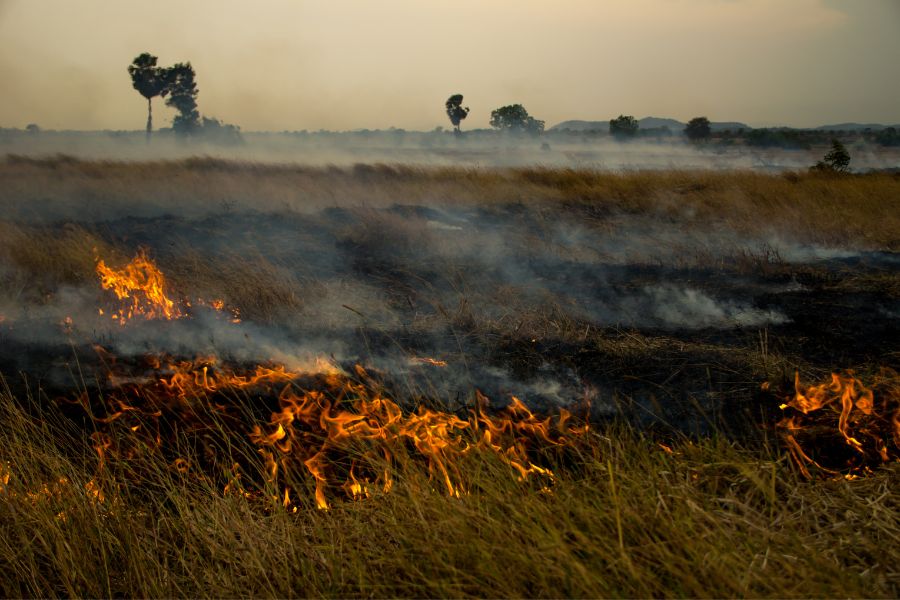
Perhaps one of the most notorious things Chiang Mai is known for is the Burning Season. In the months of January – April, the farmers in Chiang Mai will burn their agricultural waste in order to prepare for the next year’s growing cycle.
Because Chiang Mai is quite a dry place and receives little rain this time of year, these fires can often burn out of control and cause forest fires.
The large amounts of fire in the region causes a huge smog to settle over the city, which contains harmful particles that can irritate your respiratory system.
The pollution during the Burning Season of Chiang Mai is so bad that many people will leave to seek refuge in Southern Thailand where the smog doesn’t reach.
12. Jungle Trekking

Chiang Mai has gained fame as a prime destination for jungle trekking adventures. Exploring the lush and diverse jungles in this region has become a favorite activity for visitors to northern Thailand.
With numerous trekking options available, travelers can immerse themselves in the natural beauty of Chiang Mai’s jungles and discover hidden gems off the beaten track.
The region’s unique geography, dotted with mountains, waterfalls, and wildlife, provides an ideal setting for thrilling and unforgettable trekking experiences.
From guided hikes through the dense forests to multi-day expeditions, Chiang Mai offers a gateway to explore the wonders of the Thai jungle.
13. Home To Thailand’s Longest Zip Lines

For adventure seekers, Chiang Mai has earned a reputation as a hotspot for thrill-seeking travelers, as it’s home to Thailand’s longest zip line.
Nestled amidst the lush rainforests and mountains, this exhilarating activity allows visitors to soar through the treetops and take in breathtaking views of nature.
Jungle Flight, Skyline Adventure, and other renowned providers offer thrilling zip line experiences with lines stretching up to 1000 meters.
Chiang Mai’s diverse topography and rich ecosystem provide the perfect backdrop for this adrenaline-pumping adventure.
14. Weekend Markets and Night Markets
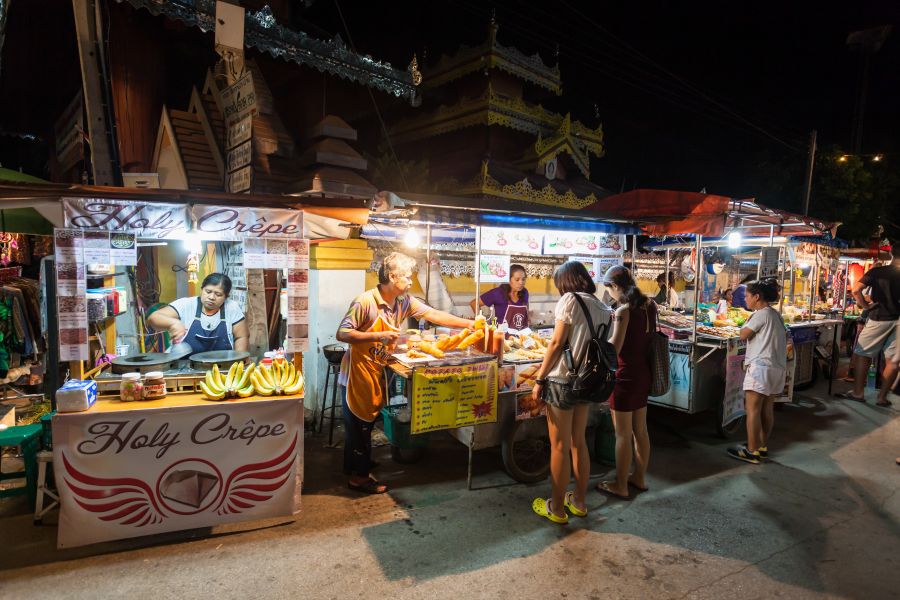
Chiang Mai has gained a reputation for its vibrant weekend markets and lively night bazaars that offer an immersive cultural experience.
These bustling marketplaces, scattered throughout the city, provide a delightful mix of handmade crafts, unique souvenirs, and mouthwatering street food.
Locals and tourists alike flock to these markets to soak up the lively atmosphere, explore the wide range of goods on offer, and indulge in delicious culinary delights.
From the famous Night Bazaar to the Sunday Walking Street, Chiang Mai’s weekend markets and night bazaars are a shopper’s paradise, where you can find treasures to take home while immersing yourself in the local traditions and flavors.
15. Thai Boxing
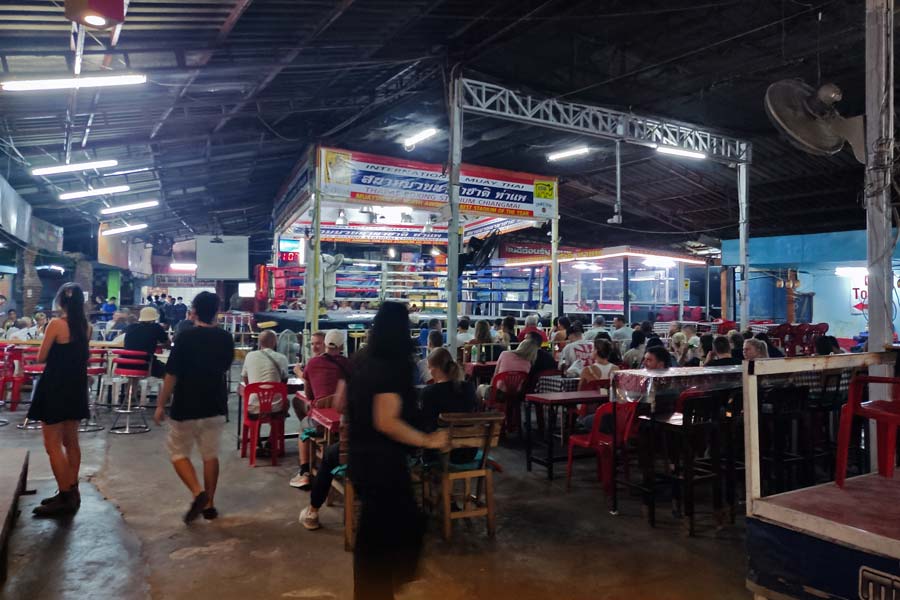
Chiang Mai has made a name for itself as a renowned hub for Thai boxing, also known as Muay Thai.
This ancient martial art holds deep cultural significance in Thailand, and Chiang Mai is no exception.
With numerous training centers and stadiums scattered throughout the city, it has become a popular destination for both locals and foreigners seeking to learn and experience this unique combat sport.
From Thapae Boxing Stadium, conveniently located near the iconic Thapae Gate, to the Pavilion Night Bazaar Boxing Stadium, Chiang Mai offers a thrilling atmosphere where you can witness authentic Muay Thai fights and even train with skilled practitioners.
Final Thoughts
So there you have it, those are the main things that Chiang Mai is known for, and as you can see, there is a lot of stories to tell about this iconic destination in the North.
Whether you’re keen to explore the ancient temples, mingle with the hill tribes, or explore its abundance of nature, we hope you get to see what makes this exciting place so well known.
